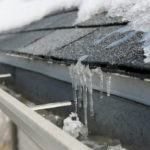
Different Vents On The Roof Of Your House And Their Purpose
Welcome to our comprehensive guide on understanding the different types of vents on a residential roof. When it comes to maintaining a healthy and efficient home, the importance of proper ventilation cannot be overstated. From regulating temperature and moisture levels to preventing the buildup of harmful gases, vents play a crucial role in keeping your roof and living spaces in optimal condition. Why are roof vents important?
Proper ventilation is essential for a residential roof for several reasons. Firstly, it helps regulate the temperature inside your home by allowing hot air to escape during the summer months and preventing cold air from entering during the winter. This can significantly reduce your energy bills by decreasing the strain on your heating and cooling systems.
Secondly, roof vents help control moisture levels in your attic. Without proper ventilation, humid air can become trapped, leading to the growth of mold and mildew. These fungi not only cause damage to your roof structure but can also pose health risks to you and your family.
Lastly, vents help prevent the buildup of harmful gases, such as carbon monoxide, which appliances like furnaces and water heaters can release. These gases can be deadly if not properly vented, so having the right type of vents in place is crucial for the safety of your household.
Now that we understand the importance of roof vents let’s explore the different types commonly found on residential roofs.
Different types of roof vents
Several types of roof vents are available, each with its unique design and function. Understanding the differences between these vents will help you determine which type is best suited for your specific needs.
Ridge vents: How they work and when to use them

Ridge vents are one of the most popular types of roof vents due to their effectiveness and discreet design. They are installed along the roof’s ridgeline, allowing hot air to escape through the top while drawing in cool air from the eaves. This creates a natural flow of air that helps regulate the temperature inside your attic.
One of the main advantages of ridge vents is their ability to provide continuous ventilation along the entire roof length. Unlike other types of vents that can be obstructed by snow or debris, ridge vents remain open and allow for a steady exchange of air. This helps prevent moisture buildup and reduces the risk of mold and mildew growth.
Ridge vents are best suited for roofs with long and straight ridgelines.
They can be installed on most roofing materials, including asphalt shingles, metal, and tile. However, it is important to ensure that the ridge vent is properly installed and paired with an adequate intake vent, such as soffit vents, to achieve optimal airflow.
Soffit vents: Their role in attic ventilation

Soffit vents are installed on the underside of the roof’s overhang, also known as the soffit, and serve as intake vents for fresh air. They work with ridge vents or other exhaust vents to create a balanced ventilation system.
The main function of soffit vents is to draw in cool, fresh air from outside and direct it into the attic space. This helps replace the hot air expelled through the exhaust vents, ensuring a continuous flow of air throughout the attic.
Soffit vents are available in various designs, including individual vents and continuous strips. Individual vents are small, discrete openings evenly spaced along the soffit, while continuous strips are larger vents that run the length of the soffit. The choice between the two depends on the aesthetics of your home and the specific ventilation requirements.
When installing soffit vents, it is crucial to ensure they are not obstructed by insulation or other materials. This can impede the airflow and render the vents ineffective. Regular maintenance and inspection of soffit vents are necessary to ensure they remain clear and debris-free.
Gable vents: Pros and cons

Gable vents are another common type of roof vent installed on the roof’s gable ends. They are typically shaped like a triangle or rectangle, providing aesthetic appeal and ventilation benefits.
One of the advantages of gable vents is their ability to create a natural flow of air by taking advantage of the pressure difference between the inside and outside of the attic. As the wind blows against the gable vent, it creates a suction effect that draws hot air out of the attic, promoting good ventilation.
Gable vents are relatively easy to install and can be an excellent option for homes without ridge or soffit vents. They are also available in various designs and materials, making it easy to find one that complements your home’s exterior.
However, gable vents do have some disadvantages. They may not provide as adequate ventilation as ridge or soffit vents, as their placement on the gable ends of the roof can limit the airflow. Additionally, if the gable vent is properly sized or there are obstructions in the attic, it can create an imbalance in the ventilation system, leading to adequate airflow.
Before installing gable vents, it is essential to consider the size and layout of your attic and the overall ventilation needs of your home. Consulting with a roofing professional can help determine whether gable vents are the right choice for your situation.
Turbine vents: Are they worth it?

Turbine vents, or whirlybird vents, are a unique roof vent that utilizes wind power to create ventilation. They consist of a spinning turbine activated by the wind, drawing hot air out of the attic and expelling it outside.
One of the advantages of turbine vents is their ability to provide ventilation without the need for electricity or moving parts. The spinning motion of the turbine creates a suction effect that can effectively remove hot air and moisture from the attic.
Turbine vents are typically installed on the roof near the ridgeline and can be an excellent option for homes in areas with consistent winds. However, their effectiveness can be limited in areas with low wind speeds or frequent calm conditions.
It is important to ensure that the turbine vent is properly sized for your attic space and that there are adequate intake vents to allow for proper airflow. Additionally, regular maintenance is required to ensure the turbine spins freely and is not obstructed by debris.
While turbine vents can be a cost-effective option for ventilation, it is essential to consider your area’s climate and wind conditions before deciding on this type of vent.
Power vents: Advantages and considerations
Power vents, also known as attic fans or roof fans, are motorized vents that actively remove hot air from the attic. They are typically installed on the roof and are powered by electricity.
One of the main advantages of power vents is their ability to quickly and efficiently remove hot air from the attic. They are equipped with a thermostat that automatically turns the fan on when the temperature inside the attic reaches a certain level. This helps prevent heat buildup and reduces the strain on your cooling systems.
Power vents are available in various sizes and designs, allowing you to choose one that suits your specific ventilation needs. They are particularly beneficial for homes in hot climates or those with limited natural airflow.
However, there are some considerations to consider when installing power vents. Firstly, they require electricity to operate, so you may need to hire an electrician to install the necessary wiring. Also, power vents can be noisy when in operation, so it is important to consider their impact on your living spaces.
Choosing the right type of vent for your roof
Now that we have explored the different types of vents available, how do you choose the right one for your roof? There are several factors to consider when making this decision.
Firstly, you need to assess the ventilation needs of your attic. Consider the size and layout of your attic space and any specific issues you may be experiencing, such as excessive heat or moisture buildup. This will help determine the type and number of vents required for optimal airflow.
Secondly, consider the design and aesthetics of your home. Some vents, such as ridge vents and soffit vents, are more discreet and blend seamlessly with the roofline, while others, like gable vents and turbine vents, can add a decorative element to the exterior.
Lastly, consult with a roofing professional or ventilation specialist to ensure you are making the right choice. They will be able to assess your specific needs and provide expert advice on the best type of vent for your roof.
Maintenance tips for roof vents
Once you have installed the appropriate vents on your roof, it is important to perform regular maintenance to ensure they remain in optimal working condition. Here are some maintenance tips to help you keep your roof vents in top shape:
Regularly inspect your vents for any signs of damage or blockages. Remove any debris, such as leaves or bird nests, that may obstruct the airflow.
Check the seals around your vents to ensure they are watertight. Cracked or damaged seals can allow water to enter your attic, leading to leaks and water damage.
Trim any nearby tree branches or vegetation that may be blocking the vents. This will help prevent debris from accumulating and impeding the airflow.
During the winter months, remove any snow or ice covering your vents. This will allow for proper ventilation and prevent moisture buildup.
If you have power vents, check the motor and fan blades regularly to ensure they are functioning correctly. Lubricate any moving parts as recommended by the manufacturer.
Following these maintenance tips ensures that your roof vents continue to provide adequate ventilation and protect your home from potential issues.
Conclusion
Proper ventilation is a crucial aspect of maintaining a healthy and efficient home. Understanding the different types of vents available for residential roofs will help you make informed decisions when it comes to upgrading or installing a new ventilation system. Whether you choose ridge vents, soffit vents, gable vents, turbine vents, or power vents, each type has its benefits and considerations.
Remember to assess your attic’s specific needs and consult a professional to determine the best type of vent for your roof. Regular maintenance and inspections will ensure that your vents continue to provide optimal airflow and protect your home from potential issues. So, take the time to invest in proper ventilation and enjoy the comfort and longevity it brings to your living spaces.



